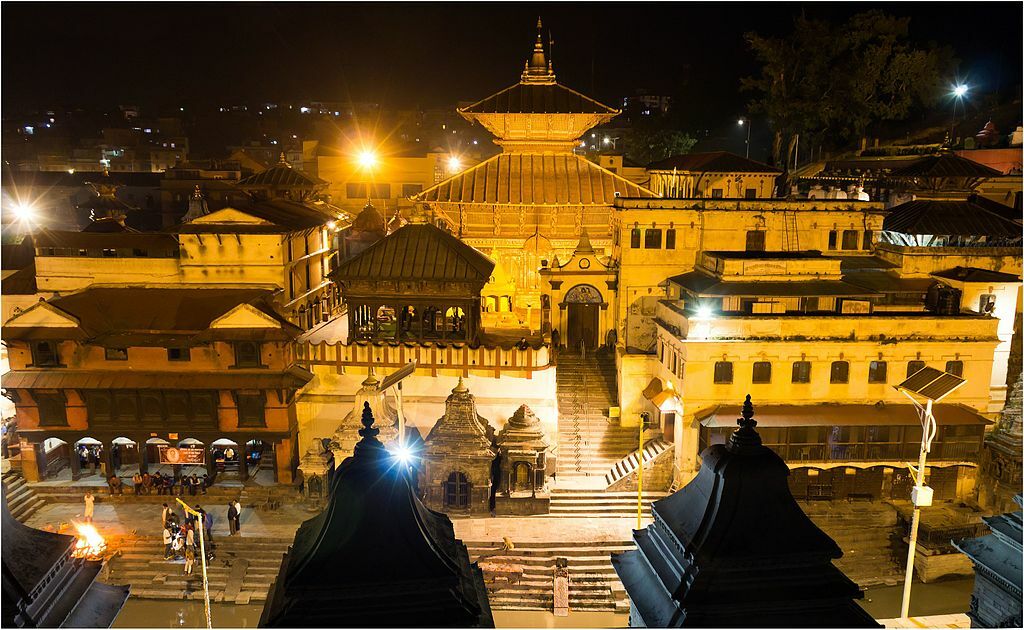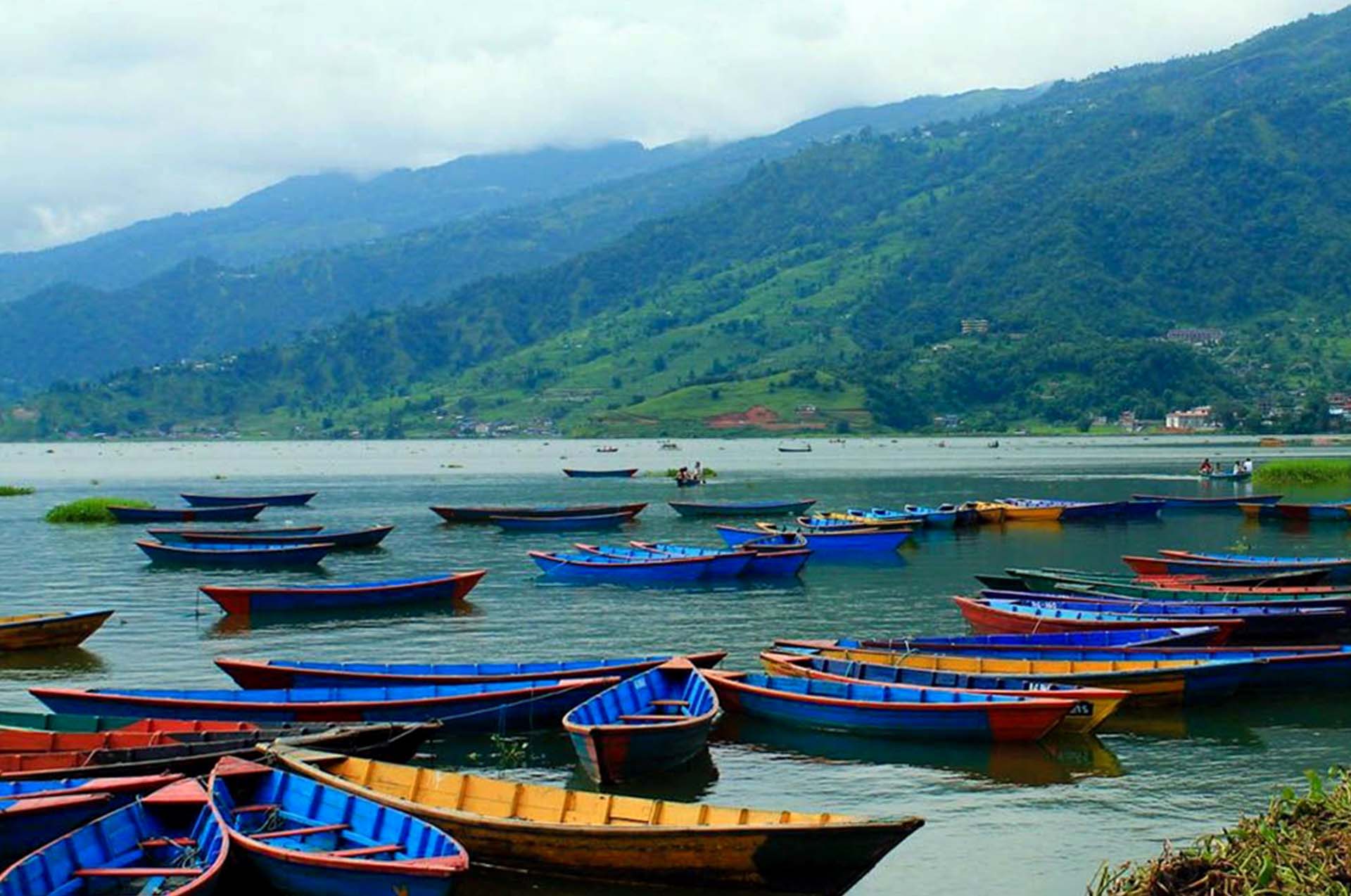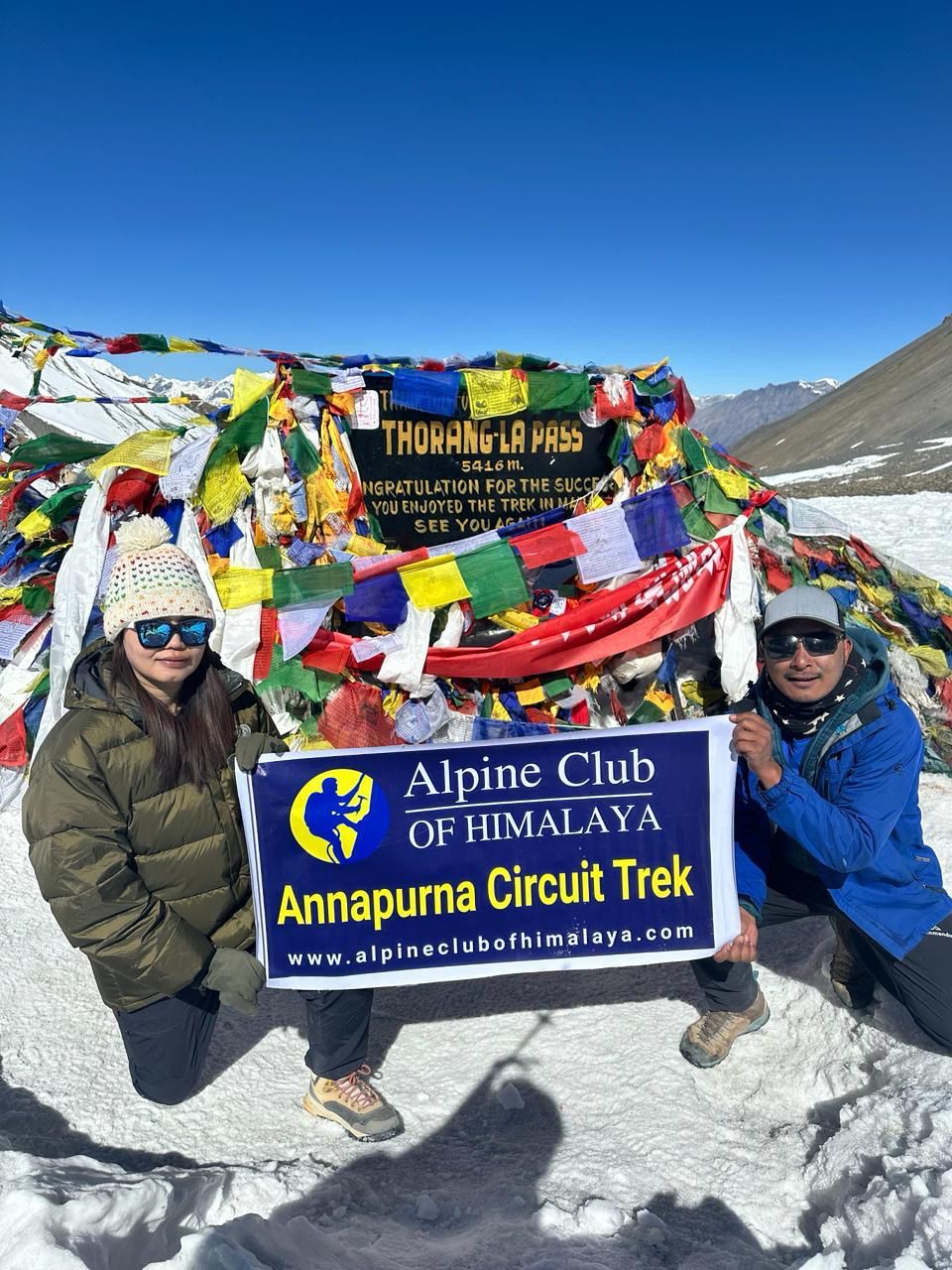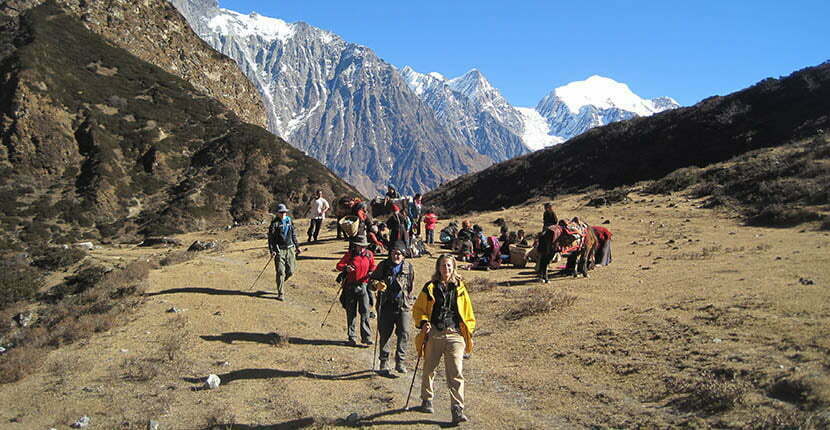Photography Tour In Nepal: Experience the breathtaking landscapes and rich cultural heritage of Nepal on a 9-day photography tour with the Alpine Club of Himalaya. This meticulously designed itinerary allows photographers to capture the stunning Himalayan vistas, vibrant local life, and ancient temples without the crowds.
Explore iconic sites such as Pashupatinath Temple and the serene Phewa Lake, alongside hidden gems in picturesque villages like Ghandruk and Bhaktapur. From the spiritual ambiance of Buddhist monasteries to the lively traditions of the Gurung community, this tour offers unparalleled opportunities to document the essence of Nepal.
With expert guidance and a focus on immersive experiences, you’ll leave with not only remarkable photographs but also unforgettable memories of Nepal’s diverse landscapes and cultures. Join us for a journey that promises inspiration and creativity at every turn!
Best Time for Photography in Nepal
The best times for photography in Nepal are generally during the spring (March to May) and autumn (September to November) seasons.
Spring (March to May): This season offers clear skies, vibrant flora, and a chance to capture the stunning landscapes with blooming rhododendrons. The temperatures are mild, making it comfortable for outdoor shoots.
Autumn (September to November): After the monsoon, the air is clear, providing breathtaking views of the Himalayas. The colors of the landscape change, and you can also capture cultural festivals and local life as this is a busy season for tourism.
Why Nepal is the Best Destination for Photography?
Nepal is a photographer’s dream, offering an unparalleled combination of breathtaking landscapes, rich cultural diversity, and unique experiences. Here’s an in-depth look at why this Himalayan nation is considered one of the best places for photography enthusiasts:
1. Majestic Mountain Scenery
Home to eight of the fourteen highest peaks in the world, including Mount Everest, Nepal’s dramatic landscapes are nothing short of awe-inspiring. The snow-capped mountains provide a stunning backdrop for landscape photography, especially during the golden hours of sunrise and sunset when the light casts a magical glow on the peaks. The diverse terrains, from the towering Himalayas to lush valleys and terraced fields, allow for endless exploration and creativity.
2. Rich Cultural Heritage
Nepal’s cultural tapestry is woven from over 120 ethnic groups, each with its own unique traditions, languages, and festivals. This diversity provides a wealth of opportunities for capturing vibrant cultural scenes. Photographers can document colorful festivals, traditional rituals, and local customs that reflect the rich heritage of the country. From the elaborate dances of the Indra Jatra festival in Kathmandu to the serene prayer ceremonies at ancient temples, every moment is a potential masterpiece.
3. UNESCO World Heritage Sites
Nepal boasts several UNESCO World Heritage Sites, each offering stunning architectural beauty and historical significance. Places like Pashupatinath Temple, Bhaktapur Durbar Square, and Swayambhunath (Monkey Temple) are filled with intricate carvings, towering stupas, and bustling local life. These sites provide not only a glimpse into Nepal’s rich history but also countless angles and perspectives for captivating photographs.
4. Vibrant Colors and Textures
The vibrancy of Nepal is reflected in its landscapes and local culture. The bright colors of traditional clothing, the intricate patterns of local crafts, and the colorful prayer flags create a visual feast. Markets brimming with fresh produce and handmade goods provide dynamic opportunities to capture the essence of daily life in Nepal, making every photograph pop with color and texture.
5. Diverse Flora and Fauna
With its varied ecosystems, ranging from the Terai plains to the alpine regions, Nepal is home to diverse wildlife. National parks like Chitwan and Bardia offer excellent opportunities for wildlife photography, where you can capture images of iconic species such as the Bengal tiger, one-horned rhinoceros, and numerous bird species. The rich biodiversity, combined with stunning natural backdrops, creates a compelling canvas for photographers.
6. Spiritual and Tranquil Atmosphere
Nepal is a deeply spiritual country, with countless temples, monasteries, and sacred sites. The serene ambiance found in places like Lumbini, the birthplace of Buddha, and the tranquil monasteries scattered across the country provides a unique opportunity to capture moments of reflection and devotion. The rituals, chants, and meditative practices observed in these spaces can result in profound and moving photographs.
7. Engaging with Friendly Locals
The warmth and hospitality of the Nepalese people are truly remarkable. Engaging with locals can lead to genuine interactions and candid photography opportunities. Whether it’s capturing a smile from a shopkeeper in a bustling market or documenting the daily life of farmers in rural areas, these moments create a deeper connection to the culture and enhance your photographic storytelling.
8. Adventure and Exploration
Nepal’s rugged terrain is not only a playground for trekkers and adventurers but also a treasure trove for photographers. Trekking routes such as the Annapurna Circuit and Langtang Valley offer stunning vistas and unique vantage points. As you explore remote villages and breathtaking landscapes, you’ll encounter diverse scenes that reflect the natural beauty and cultural richness of the region.
9. Seasonal Diversity
Each season in Nepal presents distinct photographic opportunities. The lush greenery of the monsoon season transforms the landscape, while autumn offers crystal-clear skies and vibrant colors. Winter blankets the mountains in snow, creating dramatic contrasts, and spring brings blossoming flowers that add bursts of color to your photos. This seasonal variety allows for a continually evolving photographic experience.
10. Hidden Gems and Off-the-Beaten-Path Locations
Beyond the popular tourist sites, Nepal is filled with hidden gems waiting to be discovered. Exploring lesser-known areas can lead to unique photographic opportunities that showcase the untouched beauty of the country. Whether it’s a quiet village tucked away in the hills or a remote monastery, these locations offer a chance to capture the essence of Nepal in its most authentic form.
In summary, Nepal’s stunning natural beauty, rich cultural heritage, and welcoming atmosphere make it an extraordinary destination for photography. With each click of the shutter, photographers can capture not only images but also stories that reflect the unique spirit of this incredible country. Whether you’re a professional or an amateur, Nepal invites you to explore, engage, and create lasting memories through your lens.
Photography and Drone Regulations in Nepal
When exploring Nepal’s breathtaking landscapes and rich cultural heritage, photographers must navigate specific restrictions and permissions related to photography and drone usage. Understanding these regulations will enhance your experience and ensure that you capture the beauty of Nepal responsibly and respectfully.
Photography Permissions
- Cultural Sensitivity: One of the most important aspects of photography in Nepal is cultural sensitivity. The country is home to diverse ethnic groups with unique customs and traditions. Always ask for permission before photographing individuals, especially in rural areas or during religious ceremonies. Many locals are welcoming and willing to share their stories through photographs, but approaching them respectfully is key to fostering positive interactions.
- Sacred Sites: Nepal boasts numerous temples and historical sites, many of which are significant to the local population. While photography is generally allowed, specific restrictions may apply within sacred areas. For example, certain temples may prohibit flash photography or restrict photography altogether in specific sections. Always observe posted signs and adhere to any guidelines provided by temple authorities.
- Public Spaces: In bustling public spaces like markets, streets, and festivals, photography is typically permitted. These lively environments present wonderful opportunities to capture the vibrancy of Nepalese life. However, it’s crucial to remain mindful of the people around you, avoiding capturing individuals in potentially vulnerable situations, such as during moments of grief or distress.
- Museums and Heritage Sites: Many museums and heritage sites in Nepal have specific rules regarding photography. Some may require a fee for photography, while others might limit the use of flash or tripods. Before taking photographs, check with the staff or look for signage that outlines the rules to ensure compliance and respect for the exhibits.
Drone Photography
- Drone Regulations: The use of drones in Nepal is governed by the Civil Aviation Authority of Nepal (CAAN). Drones are classified as aircraft, meaning specific regulations apply to their operation. As such, anyone wishing to use a drone for photography or videography must be familiar with the legal framework surrounding drone use.
- Permits Required: To fly a drone in Nepal, you must obtain the necessary permits from CAAN. This process can be intricate and typically involves submitting an application that includes details about the drone, the purpose of its use, and a proposed flight plan. It is essential to initiate this process well in advance of your intended flights, as approval may take time.
- Restricted Areas: Certain regions in Nepal are off-limits for drone flights. These include areas near military installations, specific cultural sites, and national parks. Familiarize yourself with no-fly zones and obtain necessary permissions for any areas where you plan to fly. Ignoring these restrictions can lead to legal repercussions and compromise the safety of others.
- Insurance: While liability insurance for drones is not always mandated, it is highly recommended. Insurance can provide financial protection in case of accidents or damage caused during drone operations, offering peace of mind as you capture stunning aerial views of Nepal’s landscapes.
- Respect Local Regulations: When flying drones, always respect local regulations and guidelines. Ensure that your drone flights do not disturb wildlife or disrupt local communities. Being mindful of the environment is critical to maintaining Nepal’s natural beauty and cultural integrity.
- Public Safety: Safety is paramount when operating drones. Always maintain a safe distance from people and property, ensuring that your drone activities do not pose any risks to bystanders or nearby structures. Responsible drone operation contributes to a positive experience for everyone involved.
Travel Insurance
Travel insurance is an essential component of any international trip, providing protection against unforeseen events such as trip cancellations, medical emergencies, lost luggage, and other travel-related issues. When traveling to Nepal, it is crucial to obtain comprehensive travel insurance that covers adventure activities you may partake in, such as trekking or mountaineering. Make sure to read the policy carefully to understand what is included and any exclusions that may apply. Having travel insurance not only gives you peace of mind but also ensures that you are financially protected during your journey.
Passport and Visa
Traveling to Nepal requires a valid passport and visa. Your passport should be valid for at least six months beyond your planned departure date from Nepal. Most travelers can obtain a visa upon arrival at Tribhuvan International Airport in Kathmandu, which is available for stays of 15, 30, or 90 days. It’s advisable to carry a few passport-sized photographs, as they may be required for the visa application process. Alternatively, you can apply for a visa in advance through a Nepalese embassy or consulate in your country. Be sure to check the latest visa regulations, as they can change frequently.
Important Note
Your safety is our top priority during the Photography Tour in Nepal. We reserve the right to cancel the trip or modify the itinerary as necessary to ensure the well-being of all participants. The unpredictable nature of remote mountainous regions means that factors such as adverse weather conditions, group members’ health, and natural disasters may require these changes. We appreciate your understanding and cooperation with the designated group leader appointed by our team in such situations. While we will strive to adhere to the planned itinerary, your safety and comfort remain paramount. Your trust and collaboration are essential as we navigate the challenges of this high-altitude adventure together.
Packing and Gear List for Your Nepal Photography Tour
Clothing
- Layered Clothing: Lightweight, breathable layers for varying temperatures. Include long-sleeve shirts, T-shirts, and thermal layers for colder mornings and evenings.
- Trekking Pants: Comfortable, quick-dry trekking pants or shorts.
- Warm Jacket: A warm, insulated jacket for colder regions and mornings, especially in the Himalayas.
- Rain Jacket: Waterproof jacket to protect against unexpected rain.
- Hiking Boots: Sturdy, comfortable hiking boots with good ankle support.
- Casual Footwear: Comfortable shoes or sandals for leisurely walks and city exploration.
- Socks: Moisture-wicking socks; consider bringing a few extra pairs.
- Hat and Gloves: A warm hat and gloves for cooler temperatures, especially in higher altitudes.
Photography Gear
- Camera: DSLR or mirrorless camera with lenses suitable for landscapes and portraits.
- Tripod: Lightweight, portable tripod for stability during long exposures and low-light conditions.
- Extra Batteries: Multiple fully charged batteries for your camera, as power sources may be limited.
- Memory Cards: Ample storage; bring extra memory cards to ensure you don’t run out of space.
- Lens Cleaning Kit: Microfiber cloths and lens cleaner to keep your gear dust-free.
- Drone (if applicable): Check for necessary permits and guidelines for drone usage in Nepal.
Accessories
- Daypack: A small backpack for day trips to carry essentials like water, snacks, and camera gear.
- Water Bottle: Reusable water bottle to stay hydrated; consider a water purification system or tablets.
- Sunglasses: UV-protection sunglasses for bright sun exposure, especially in the mountains.
- Headlamp/Flashlight: For navigating in low light conditions or during power outages.
Health and Safety
- Travel Insurance Documents: Printed copies of your travel insurance policy.
- First Aid Kit: Basic first aid supplies, including band-aids, antiseptic wipes, pain relievers, and any personal medications.
- Insect Repellent: Especially important in warmer areas to protect against bites.
- Sunblock: High-SPF sunscreen to protect against sunburn, particularly at higher altitudes.
Personal Items
- Toiletries: Travel-sized toiletries including shampoo, conditioner, soap, toothbrush, toothpaste, and any personal hygiene products.
- Towel: Quick-dry travel towel for convenience.
- Cash and Cards: Local currency (Nepalese Rupee) and international credit/debit cards for purchases.
Optional Items
- Notebook and Pen: For journaling your experiences or jotting down notes about locations and settings.
- Portable Charger: A power bank to keep your devices charged during long days of exploration.
- Binoculars: For observing wildlife and distant landscapes.
- Swimsuit: If you plan to visit pools or lakes in Pokhara.
This packing list will help ensure you’re well-prepared for the diverse environments and experiences during your photography tour in Nepal. Adjust the list based on personal preferences and specific activities planned.
REQUIREMENTS/ DOCUMENTS
- Passport with a validity of minimum 6 months.
- Scanned Copy of Passport and passport size photo with white background and details fill form (form will be provided to you) to be submitted before 30 days in advance
BOOKING POLICY
- Clients must agree and abide by the Company Policy
- Insurance is recommended – not compulsory
- Clients must carry Proof of ID while traveling.
- The itinerary can be changed without notice due to unavoidable circumstances beyond of our control such as natural calamities, political unrest, itinerary changes by Chinese Authorities and so on.
CANCELATION TERMS
- If canceled 30 Days prior to departure date from client’s side, all previously paid amount(s) will be forfeited.
- If canceled 31 – 90 Days prior to departure date, 75% of the deposit will be refunded except for the non – refundable deposit
- If canceled more than 90 days prior to departure date, all previously paid amount(s) will be refunded
PAYMENT MODE & OPTIONS
- 30% of the amount to be deposited at the time of booking confirmation.
100% of the amount to be cleared before departure from Kathmandu.
Trip Highlights
- Capture the stunning sunrise over the Himalayas, where the first rays of light illuminate the majestic peaks of Annapurna and Dhaulagiri, creating a breathtaking backdrop for your photography.
- Document the spiritual atmosphere of Pashupatinath Temple, one of the holiest Hindu sites, where you can photograph the unique Sadhus (holy men) and the vibrant rituals taking place along the Bagmati River.
- Immerse yourself in the rich culture of the Gurung people as you explore their traditional homes, local architecture, and terraced fields, all set against the backdrop of stunning mountain views.
- Visit Swayambhunath (Monkey Temple) for panoramic views of Kathmandu Valley and capture the intricate details of this ancient stupa, a UNESCO World Heritage Site.
- Photograph the beautifully preserved medieval architecture and daily life in Bhaktapur, renowned for its traditional pottery and bustling marketplaces.
- Enjoy a serene photography session on Phewa Lake, surrounded by lush hills and offering reflections of the Annapurna range in its waters.
- Explore the spiritual heritage of Pharping, known for its ancient monasteries and temples, where you can capture the essence of both Hindu and Buddhist traditions.
- Experience the lively markets and streets of Kathmandu and Pokhara, providing endless opportunities to photograph the daily lives of the local people and their vibrant culture.
- With the right permits, capture stunning aerial shots of the diverse landscapes, from terraced fields to majestic mountain ranges, adding a unique perspective to your portfolio.
- Engage with the warm and welcoming Nepalese people, creating meaningful moments that can be beautifully captured through your lens, highlighting the country’s rich diversity and culture.
















Write a Review